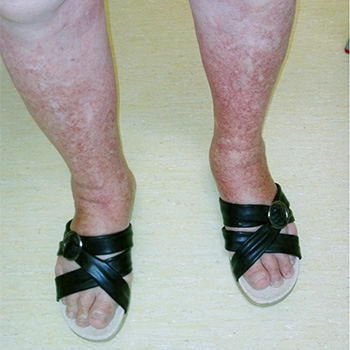Keywords
Schamberg’s disease, amlodipine
Abstract
Pigmented purpuric dermatosis is a chronic benign skin disorder of unknown aetiology. Although there are several other potential cofactors, drugs are the most frequent cause. This paper describes the case of a 71-year-old woman who was admitted in the emergency department with skin lesions on the lower extremities, characteristics of Schamberg's disease. After a medical study and treatment, it was concluded that the lesions were caused by amlodipine administration. To the authors’ knowledge, only one previous case describing an association between this disease and amlodipine administration has been reported in the medical literature.
References

Views: 2313
HTML downloads: 3160
PDF downloads: 453
Skin lesions compatible with Schambers´s disease downloads: 0
Published:
2017-04-27
Issue:
Vol. 4 No. 3
(view)










